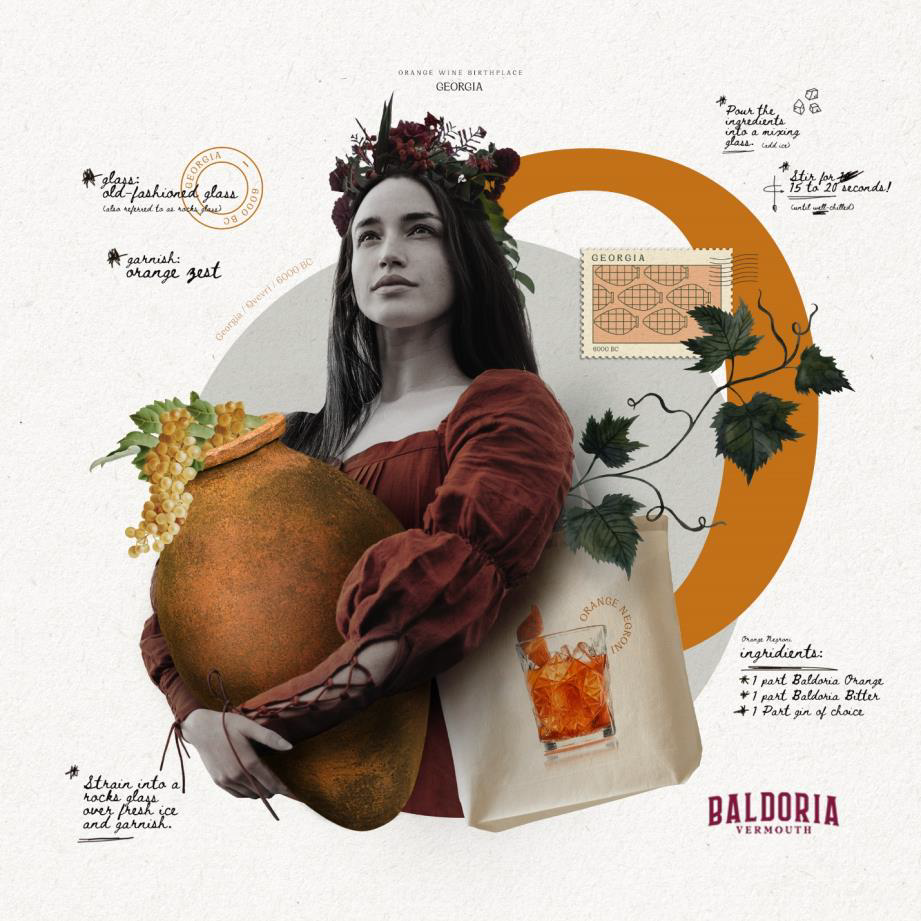Vermouth Amaro
What is Vermouth Amaro?
Vermouth Amaro represents a fascinating hybrid category of Vermouth that bridges the gap between traditional aromatized wines and bitter Italian digestifs. This distinctive style combines the wine base and fortification typical of vermouth with the pronounced bitter herbal character found in amaro, creating a complex aperitif that's both refreshing and intensely flavored. What defines Vermouth Amaro is its higher concentration of bitter botanicals like gentian, wormwood, and chinchona bark, which give it a more assertive, medicinal quality compared to standard sweet or dry vermouths.
Learn More About Vermouth Amaro
What makes Vermouth Amaro unique?
Vermouth Amaro stands apart from traditional sweet and dry vermouths by incorporating the distinctive bitter botanicals typically found in amaro liqueurs, creating a fortified wine that balances the herbal complexity of vermouth with the pronounced bitterness of gentian root, wormwood, and other bittering agents. While standard vermouths focus primarily on aromatic herbs and spices for flavor complexity, Vermouth Amaro deliberately seeks out that characteristic bitter finish that makes your mouth water and primes your palate for food. This hybrid category bridges the gap between aperitif wine and digestif bitter, offering bartenders and drinkers a single bottle that can function as both a cocktail modifier and a standalone sipper with remarkable depth.
How is Vermouth Amaro made?
Vermouth Amaro starts with a fortified wine base that gets infused with a carefully selected blend of bittering herbs, roots, and botanicals like gentian, wormwood, cinchona bark, and various spices. The mixture macerates for several weeks, allowing the botanical flavors to fully integrate with the wine, before being filtered and sometimes aged in wooden casks to develop additional complexity. The final step involves adjusting the sweetness level and alcohol content to achieve the perfect balance between the wine's fruitiness and the herbs' bitter bite.
How do you drink Vermouth Amaro?
Vermouth amaro shines brightest when sipped neat or over ice as a digestif, letting its complex herbal bitterness work its magic after a heavy meal. While some bartenders incorporate it into sophisticated cocktails like Negroni variations or Manhattan riffs, most Italian producers intended these fortified wines to be savored slowly on their own. The cooler months of fall and winter provide the perfect backdrop for vermouth amaro's warming spices and medicinal herbs, making it an ideal companion for cozy evenings by the fire or as a contemplative nightcap.
How do I choose a good Vermouth Amaro?
Start by considering the cocktail you're making – lighter, citrus-forward drinks pair beautifully with herbaceous vermouths like Dolin Dry or Cocchi Americano, while rich, spirit-forward cocktails call for bold, bitter options such as Punt e Mes or Carpano Antica Formula. Your personal taste preference matters too: if you love complexity and can handle bitter flavors, reach for something with prominent wormwood and gentian notes, but if you prefer smoother sips, look for vermouths with more wine-forward profiles and subtle herbal backing. The best approach is to taste a few different styles neat at room temperature – this gives you the clearest picture of how each one will contribute to your cocktails.
Nutritional Information
Typical Calorie Range per Ounce: 20-35 calories
Typical Carbohydrate Range per Ounce: 3-7 grams
Typical Sugar Range per Ounce: 2-6 grams
Typically Gluten Free: Yes
Most vermouth amaros are made from wine bases with botanical infusions, making them naturally gluten-free. The sugar content comes from added sweeteners and botanical extracts rather than gluten-containing grains. Keep in mind that these ranges can vary significantly between producers and styles—some craft amaros might run higher in sugar content depending on their botanical blend and sweetening approach. Always check the specific product label and manufacturer information to confirm gluten-free status, especially if you have celiac disease or severe gluten sensitivity.
Scrolled this far? Your reward? Vermouth Amaro Trivia!
- The original Vermouth del Professore, created in Turin in 1906, was actually a pharmacist's attempt to make medicine taste better. Professor Giuseppe Cappelletti infused his herbal digestive with fortified wine, accidentally creating what many consider the first true vermouth amaro hybrid. His customers kept coming back not for their ailments, but because they craved the taste.
- Punt e Mes gets its unusual name from a stock exchange transaction gone wrong. In 1870, a stockbroker at Carpano's bar in Turin ordered his usual vermouth but asked for "punt e mes" (point and a half) – referring to a stock price he'd just heard called out. The bartender misunderstood and added an extra half-dose of bitter chinchona bark to the drink, creating the distinctively bitter-sweet profile that's still made the same way today.
- During Prohibition, Italian-American families would smuggle vermouth amaro recipes inside their pasta sauce cans. These "Sunday gravy" containers fooled customs agents completely, and many of today's American amaro producers can trace their recipes back to these hidden family formulas. Some still age their amaro in repurposed tomato barrels as a nod to this clever bootlegging trick.
- The Alpine herb génépi, found in many French vermouth amaros, only grows above 6,500 feet and can live for over 100 years. Harvesters must climb dangerous mountain faces to collect it by hand, and French law limits each person to collecting just 100 stems per year. A single bottle of premium génépi vermouth amaro might contain herbs that are older than your great-grandmother.
- Carpano Antica Formula wasn't actually "ancient" until 1999. The brand disappeared entirely in the 1960s, and what we drink today is a complete recreation based on old advertising posters and the faded memories of elderly bartenders. The "original 1786 recipe" is really a modern interpretation that became so popular, it convinced everyone it had never left.
Higher-proof spirits can be intense. Mix carefully, taste thoughtfully, and enjoy responsibly.
Gift message (optional)




